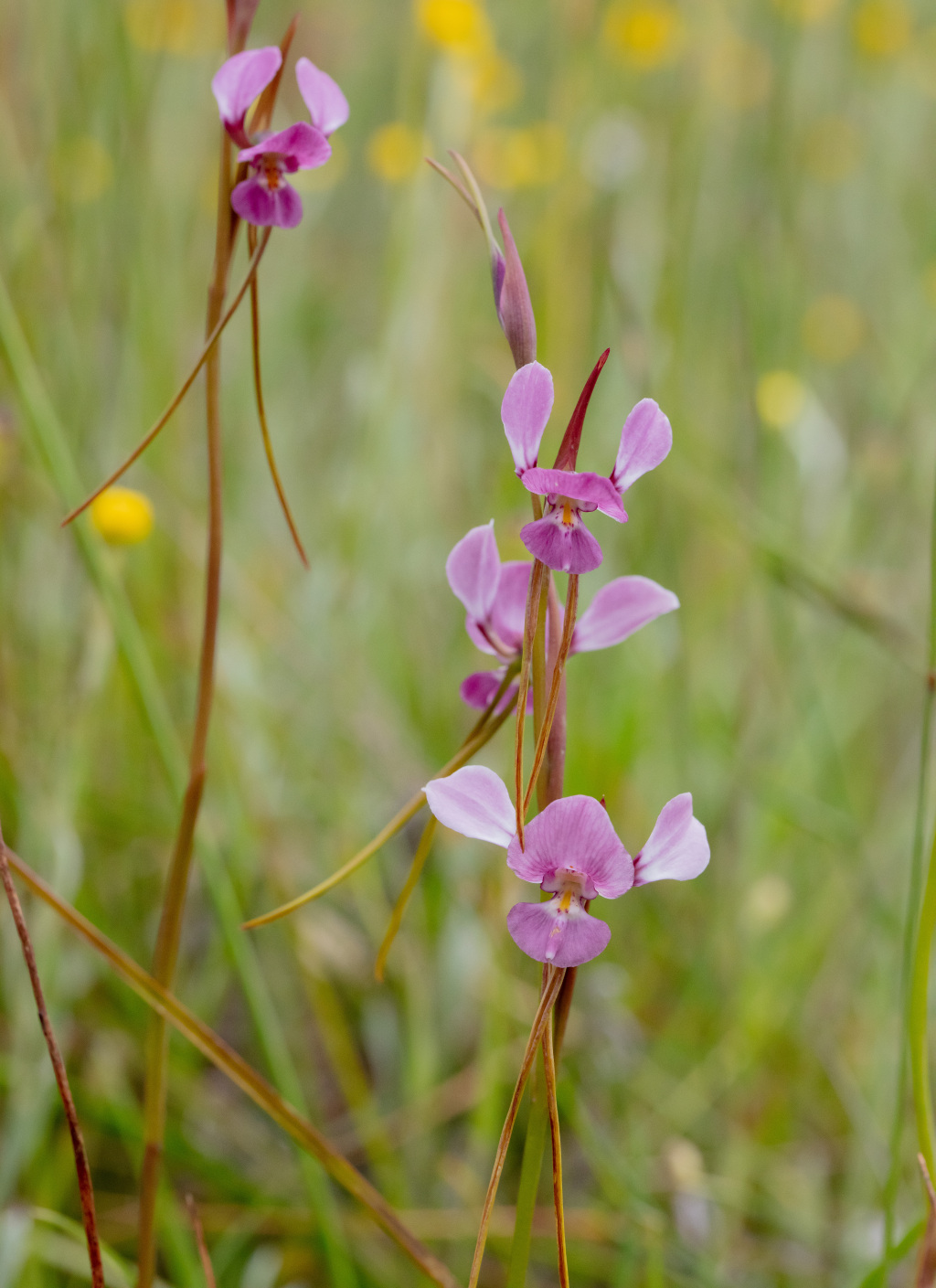Diuris daltonii
(C.Walter) D.L.Jones & M.A.Clem.Flowering plant usually 25–50 cm tall, slender to moderately stout. Leaves 1–4, usually 2, linear, channelled, 15–25 cm long. Flowers 1–7, erect, dark purple, often with darker suffusions, sometimes fragrant; pedicel (excluding ovary) 2–5 cm long, mostly enclosed within bract; dorsal sepal erect, broadly ovate, 12–17 mm long; lateral sepals deflexed, usually parallel, narrow-linear, greatly exceeding petals, 30–60 mm long; petals obliquely erect, ovate to elliptic, distinctly clawed, 12–25 mm long, claw often with a short spur-like apical lobe. Labellum 3-lobed from base, 10–16 mm long; lateral lobes erect, less than half as long as mid-lobe, oblong, margins entire; mid-lobe keeled, long-clawed, broadly fan-shaped, margins irregular, with 2 longitudinal, divergent, yellow ridges from the base ending in tooth-like processes around midway along lamina. Column narrowly winged. Flowers Oct.-Dec.
Wim, VVP, GGr, DunT. Apparently confined to western Victoria between Mt Arapiles and the Grampians, in heathy forests and River Red Gum (Eucalyptus camaldulensis) woodlands on water retentive soils. Records for South Australia (Mt Gambier and Naracoorte areas) need further investigation.
Previously included in Diuris punctata, but now considered distinct due to the longer neck on the labellum mid-lobe, longer petal claws that often have a short spur-like apical lobe and its more westerly distribution.
 Spinning
Spinning
